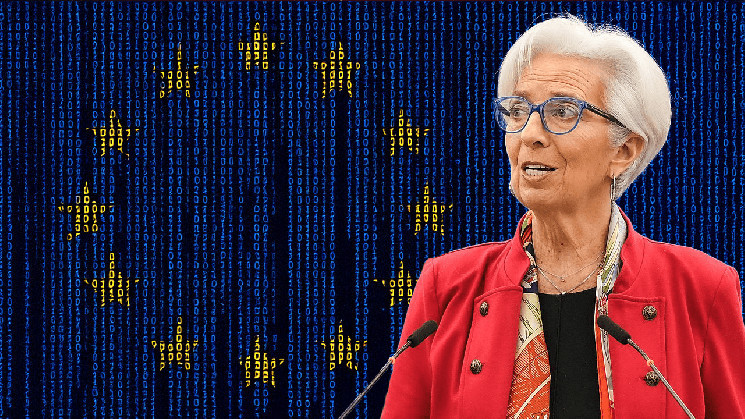ECB President Christine Lagarde said the European Central Bank (ECB) aims to finalize digital euro preparations by October 2025, but the launch remains conditional on legislative approval and stakeholder cooperation.
EU Digital Euro Preparation Phase Target October 2025 Uncertain launch amid delays in legislation
The ECB is competing to complete the digital euro foundation by October 2025, but the currency development side has a legislative green light on hold. “Our deadline is October 2025 and we are preparing for that deadline, but we cannot move unless we complete a legislative process where other parties, committee councils, other parties known as parliament and stakeholders cannot actually move,” Lagarde said.
Lagarde highlighted the urgency of the project, noting its association “on both the wholesale and retail level.” Although Lagarde cited it as the end of the preparation phase for October 2025, the ECB document outlines the timeline that will end in November 2025. The phase, which began in November 2023, focuses on technical design, legal frameworks, and gathering stakeholder feedback.
According to Deutsche Bundesbank estimates, the ECB’s governing council has decided whether the ECB’s governing council will continue, and analysts have predicted a potential launch before 2028. The digital euro is reportedly equipped with retail and wholesale components. The retail version, designed for public use, promises free basic transactions, offline features and privacy protection, except for transaction tracking by the ECB.
The wholesale sector is targeting financial institutions and leverages blockchain to make payments faster across bank settlements and across borders. Both aim to ensure the competitiveness of FIAT currencies during digital currencies, while complementing the existing euro payment system. Challenges continue, including privacy debates, concerns over commercial banking destabilization, and technical hurdles. Critics warn that the retail digital euro could reduce bank deposits and encourage discussions about restrictions.
Meanwhile, the ECB ensures high privacy standards to address the fear of surveillance. The ECB has been working with the Digital Euro Ethereum blockchain based on testing by the European Investment Bank (EIB) and Bank de France. For example, the EIB issued digital bonds to Ethereum, and Bank de France used it for CBDC transactions. Other blockchain platforms have also been investigated, but specific details are limited.
Globally, the ECB faces pressure from the development of China’s digital yuan and US stubcoin, increasing demands to protect the digital euro’s financial sovereignty. China’s CBDC has come a long way. Research suggests that CBDCs in China use Chang’an chains for blockchain-related functions, but their core transaction system is not built on the blockchain. US dollar-based ciphers are the dominant force at Stablecoin Arena.
Lagarde assembled the project as important to maintain the global position of the Euro. Despite progress, the fate of the digital euro is based on legislative approvals since 2025, with stakeholders navigating complex regulatory and technical landscapes. While Lagarde’s October 2025 deadline highlights the urgentness of the ECB, delays and the central bank’s own roadmap suggest a cautious path to a 2028 launch.


